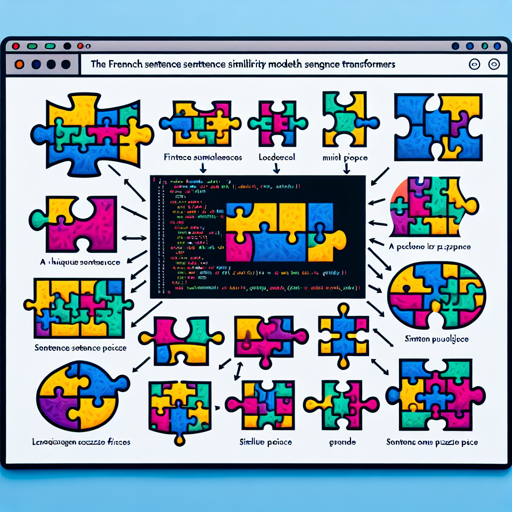If you’ve ever wondered how to measure the similarity between different sentences in French, you’re in the right place! In this guide, we’ll walk you through using the Sentence Transformers library to determine sentence similarity, specifically for French texts. Let’s jump in!
Understanding Sentence Similarity
Before we get into the code, let’s simplify the concept of sentence similarity with an analogy. Think of each sentence as a unique puzzle piece. Just like puzzle pieces can connect when they have similar shapes or colors, sentences can be compared based on their meanings. When we analyze sentences for similarity, we’re looking for how well these pieces fit together in the grand picture of language.
Getting Started
To begin, ensure you have the Sentence Transformers library installed in your Python environment.
!pip install -U sentence-transformersImporting Necessary Libraries
Next, we’ll need to import the necessary packages from the library.
from sentence_transformers import SentenceTransformerLoading the Model
Now, you need to load the pre-trained model. You’ll replace `..model_path..` with the appropriate model path for handling French sentences.
model = SentenceTransformer('..model_path..')Encoding Sentences
Let’s transform our sample sentences into embeddings:
sentences1 = ["J'aime mon téléphone", "Mon téléphone n'est pas bon.", "Votre téléphone portable est superbe."]
sentences2 = ["Est-ce qu'il neige demain?", "Récemment, de nombreux ouragans ont frappé les États-Unis", "Le réchauffement climatique est réel"]
embeddings1 = model.encode(sentences1, convert_to_tensor=True)
embeddings2 = model.encode(sentences2, convert_to_tensor=True)Calculating Cosine Similarity
We can now calculate the cosine similarity between the embeddings of the two sets of sentences:
cosine_scores = util.pytorch_cos_sim(embeddings1, embeddings2)
for i in range(len(sentences1)):
for j in range(len(sentences2)):
print(cosine_scores[i][j])Understanding the Output
The output you’ll receive is a matrix of similarity scores. A higher score indicates a greater similarity between the two sentences. This helps you understand how closely related the sentences are in meaning.
Troubleshooting Tips
- Missing Dependencies: Ensure you have all required libraries installed. If you encounter errors related to missing packages, re-install them using `pip`.
- Model Path Issues: Double-check the model path you provided. If the path is incorrect, the model will not load.
- CUDA Errors: If you run into GPU-related errors, you might need to install PyTorch appropriately or switch to CPU mode by setting your device to CPU.
- For more insights, updates, or to collaborate on AI development projects, stay connected with fxis.ai.
Conclusion
In this guide, we explored how to utilize the Sentence Transformers library to measure the similarity of French sentences. With just a few steps, you can assess how closely sentences relate to one another, dissecting the intricate tapestry of language like a true language artisan.
At fxis.ai, we believe that such advancements are crucial for the future of AI, as they enable more comprehensive and effective solutions. Our team is continually exploring new methodologies to push the envelope in artificial intelligence, ensuring that our clients benefit from the latest technological innovations.

